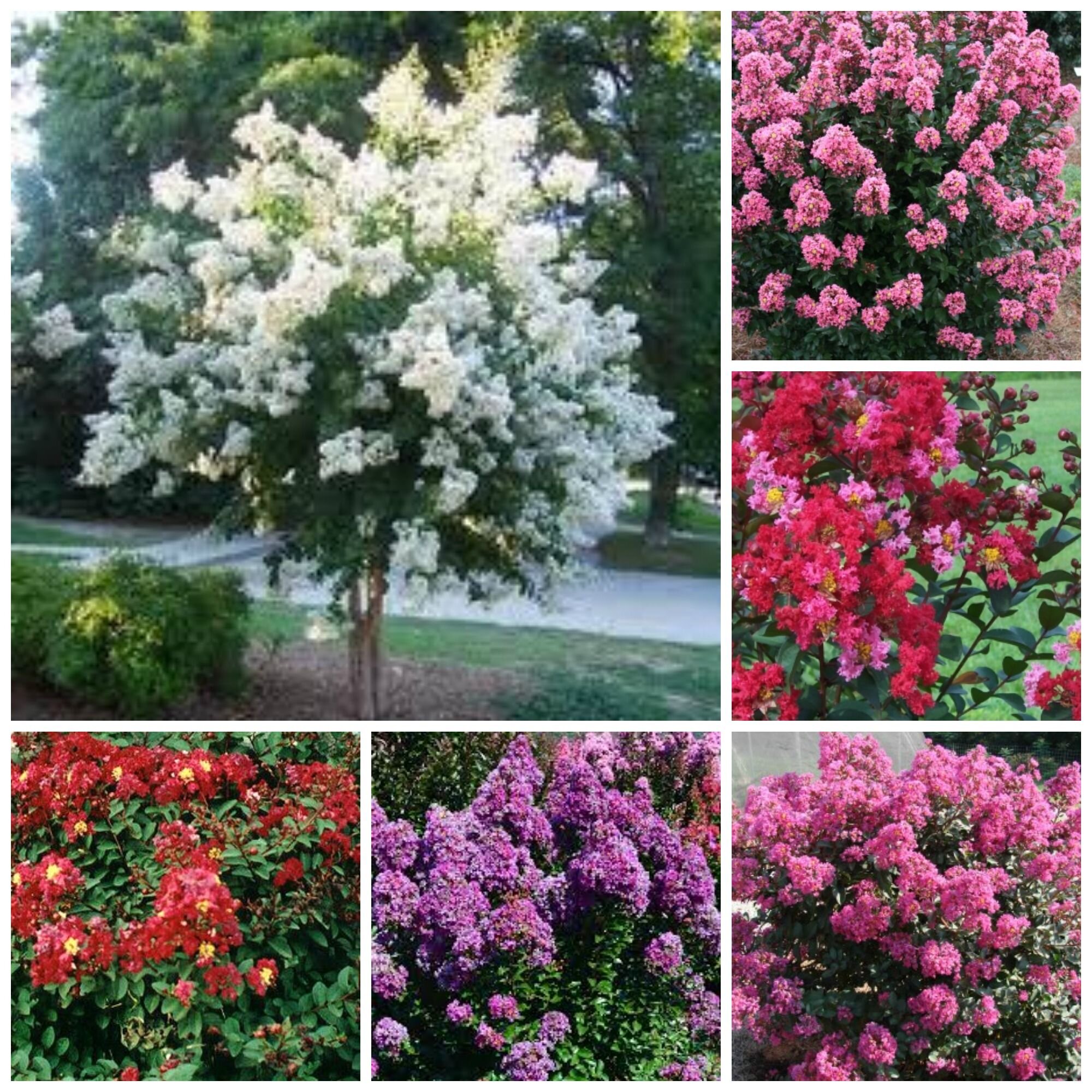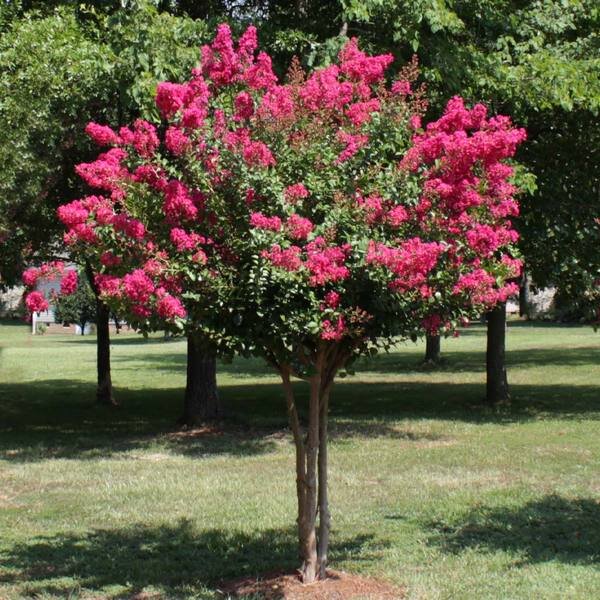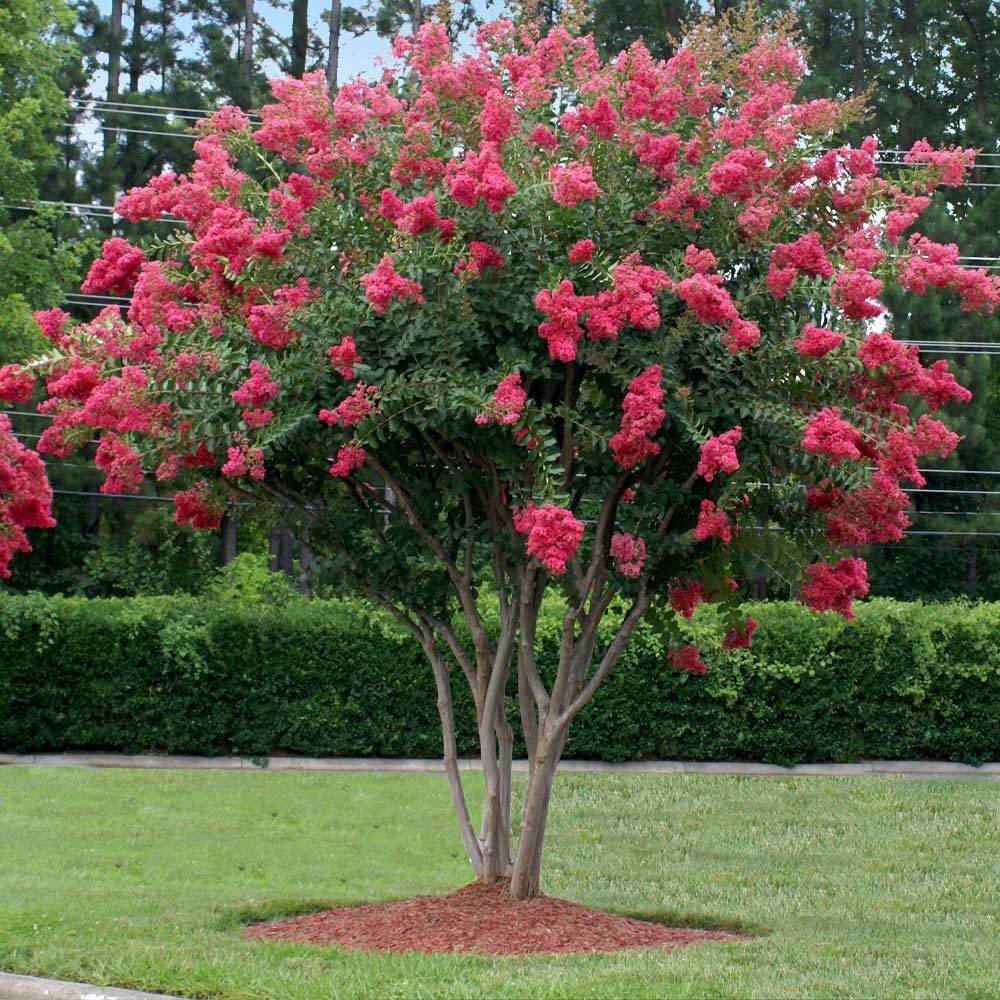All You Need to Know About The Crape Myrtle
With hundreds of sizes and colors available, crape (or crepe) myrtles are a terrific, low-maintenance choice for prolific blooms during hot, humid summers. Nowadays, many varieties are hybrids that maximize the colorful blooms of the common crape myrtle (Lagerstroemia indica) and/or the distinctive bark, cold hardiness, and disease-resistance of the Japanese crape myrtle (Lagerstroemia faurei).
Crape myrtles bloom in midsummer, with colors including white, lavender, purple, pink, magenta, and red. After blooming, they develop distinctive seed heads, then the leaves tend to fall toward the end of autumn, leaving the colorful, dark red and gray bark exposed for the winter.
Crape myrtles are deer resistant and tolerant of the Lowcountry growing conditions. They can tolerate drought and heat well, making them a hardy choice for the Lowcountry landscape. Their noninvasive roots make for a good choice near walkways or driveways, large containers, or beds
Crape Myrtles bloom later than many other flowers, as they bloom later in the summer around June. If your tree is not blooming them, check the location of your tree and its fertilizer. Crape Myrtles need at least half a day’s worth of sunlights in order to bloom. Their flowers will thrive with a high phosphorus fertilizer. A balanced fertilizer, such as 10-10-10, will ensure that the flowers are getting phosphorus, while the tree is getting the nitrogen it needs to continue growing.
Off Colored Blooms
The crape myrtle’s bloom color is controlled by a pigment called anthocyanin. This pigment is activated by sunlight, so there has been a lot of cloudy days, your blooms may be dull or not of their natural color. The amount of water that the tree is receiving and the pH of the soil can, also, contribute to the bloom color. The Crape Myrtle is known for being drought tolerant, but it prefers a moderate amount of consistent moisture. Keep the soil for your trees moist but not puddled. If it doesn’t rain, your trees will need a long, slow and deep watering once or twice a month.
Spots or White Powder on Leaves
While the crape myrtle has a high resistance to fungus and mildew, aphids and scale can still be found on Crape Myrtles. Aphids are tiny green bugs that use the leaves of trees for nectar, causing sooty mold to occur. Scale are white and gray bugs that form at the truck of trees and cause the tree’s bark to turn black from sooty mold. Learn more about sooty mold and it’s treatment here.
The Crape Myrtle prefers slightly acidic soil with a pH ranging from 5.0 to 6.5. Conduct a pH test of the soil, which can be found at your local gardening store or performed by Coastal Shores. To raise the acidity of your soil, add lime to it. To lower the acidity, add sulfur.




